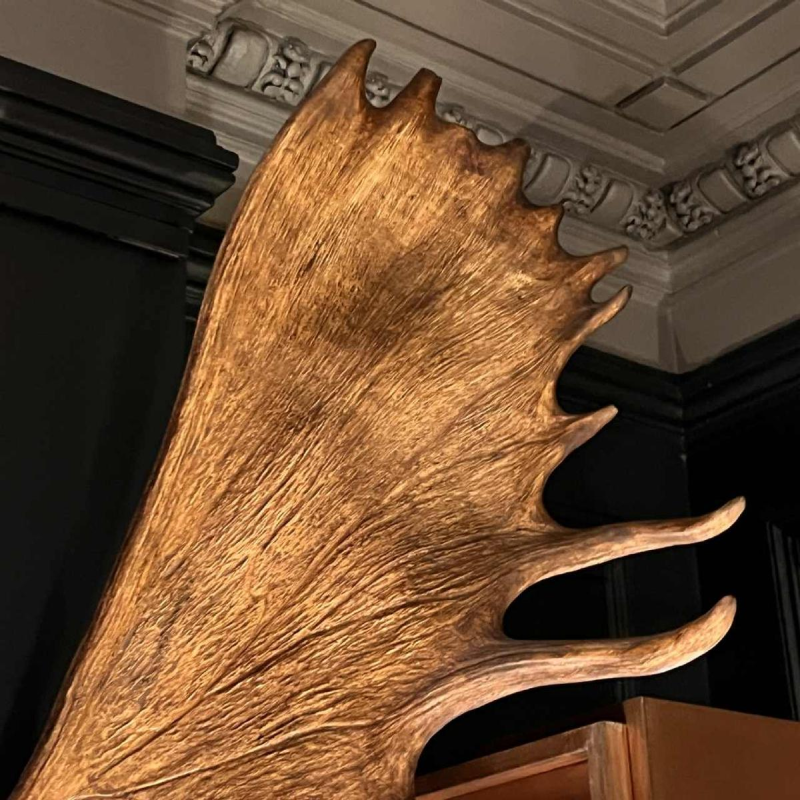Antica Namur Fine Art Fair : 08-16 November 2025 : More info
-
-
-
-
- Archaeology & minerals
- Antique weapons
- Comics - cels & derivative products
- Vienna bronzes
- Seals - stamps
- Postcards
- Curiosities
- Black Forest
- Musical instruments
- Scientific instruments
- Toys
- Medals
- Military collectibles
- Coins
- Religious objects
- Fragrances
- Knobs - canes - parasols - umbrellas
- Dolls
- Advertising
- Sports
- Taxidermy
- Postage stamps
- Classic vehicles (pre-1980)
- Wines & spirits
- Radios - Audio-visual
- Camera
- Other collectibles
- Hunting objects
Alces elk antler, large hunting trophy (160 cm)
-
Secure payment in 3 interest-free installments with Klarna
-
Fast and insured delivery
-
Easy 14-Day Return
An impressive and highly decorative hunting trophy, made from elk antler with a span of 160 cm and a height of 103 cm.
In good condition.
Alces is a genus of ruminant mammals in the deer family, whose representatives are commonly known as elk (for Siberian and Scandinavian individuals) and moose (for North American individuals). These animals, whose antlers are flattened into a fan shape, are the largest of today's cervids.
Historically, the genus Alces was considered monotypic, comprising only the species Alces alces, itself divided into several subspecies, but some specialists now suggest that the North American and Eurasian populations should be considered as separate species, with the scientific names Alces americanus and Alces alces respectively.
The animal is called a ‘moose' in Europe and a ‘moose' in North America. The term ‘moose' comes from the Basque word oreinak, plural of orein, which is pronounced /o?ej?ak/ and would have generally meant ‘deer', ‘reindeer' or ‘caribou'. It should not be confused with the wapiti (Cervus canadensis), which is a deer (head in cape, massacre, etc.), closely related to the elaphe deer.
Data sheet
- Period
- 20th century
- Dimensions (H - W - D)
- 103 x 160 x 55
- Weight
- 20000
- Condition
- Good
- Colours
- Beige
Brown - Materials
- Organic
Organic/Dierlijke Hoorn
Country of destination : France
- Pickup on site or shipping to be arranged - €0.00 -
- Correos - €32.67 -
- Chronopost - €38.40 - between 10/11 and 13/11
- UPS - €41.00 - between 10/11 and 12/11
- UPS - €48.40 - between 10/11 and 11/11
- UPS - €61.71 - between 13/11 and 14/11
- UPS - €82.28 - between 12/11 and 13/11
Report illegal content
This form is only used to notify us of illegal content on product: Alces elk antler, large hunting trophy (160 cm).
(https://www.artaplaza.com/en/wall-decorations/4849-alces-elk-antler-large-hunting-trophy-160-cm.html)
-
verified
Authenticity verified by our team of experts
-
local_shipping
Secure worldwide delivery within 5 to 10 business days
-
credit_card
100% secure payment via Stripe or credit card
-
undo
Returns possible within 14 days
















